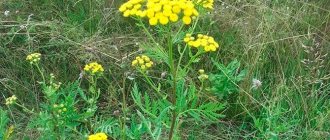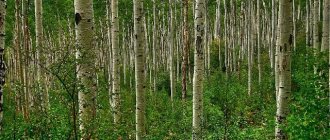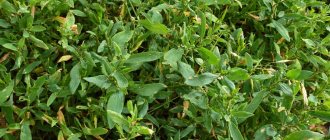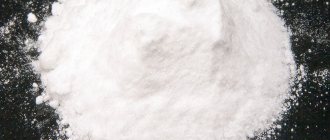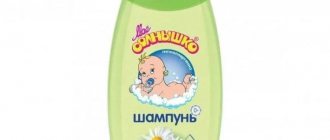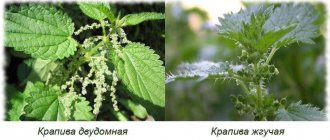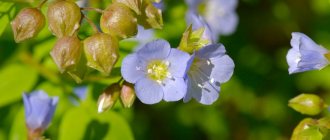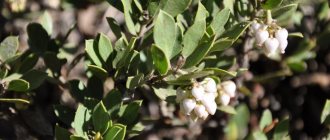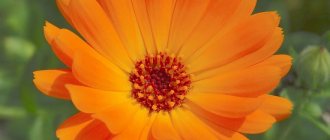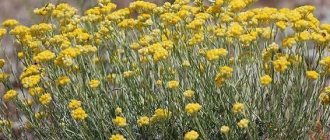Bergenia is a perennial plant that can break through hardened soil and remain attractive throughout the year. In May-June, bergenia forms beautiful inflorescences of buds that resemble bells. In summer, large green foliage effectively sets off other garden plants, and with the onset of cold weather, the above-ground part of the perennial turns bright red, purple or pink. The leaves do not die off even in winter and remain intact under a layer of snow.
The second official name of the plant is bergenia. Thanks to its fleshy foliage, it is often called “elephant’s ear.” Bergenia is common in Altai, Mongolia, Kazakhstan, China, and Korea. It grows near rivers, in coniferous forests, on rocks. It is found even at altitudes of more than 2000 m above sea level.
In its natural habitat
Cultivated bergenia
11 species of bergenia have been discovered. These plants are up to 50 cm in size with a branched powerful root reaching 2 m in length, and inflorescences of various colors. The photo shows the most famous type of bergenia - thick-leaved. It has a bare pink-red stem, wide rounded leaves formed at the basal rosette, and small bell-shaped buds.
The following types of bergenia are also popular:
- Cordifolia. It has leaves that resemble a heart.
- Ciliated. It differs from other varieties by the presence of villi on the leaves.
- Badan Strechi. Miniature perennial no more than 20 cm high.
- Gissarsky. It is considered the most ancient species. It has elongated matte leaves and small inflorescences of light pink buds.
- Pacific. Reminiscent of thick-leaved bergenia with smaller leaves tapering at the base.
Bergenia thickleaf
Bergenia ciliata
Heart leaf bergenia leaf
Badan Strechi
Pacific Bergenia leaf
Bergenia is notable not only for its beauty, but also for its valuable medicinal properties. Tibetan monks also used bergenia to create healing infusions. In modern folk medicine, bergenia tea is most often used to eliminate health problems. The article will help you figure out when to use the plant and how to take it without harm to the body.
Beneficial features
Bergenia tea is also known under the names Mongolian, Chigir, Altai. The abundance of definitions is not related to its beneficial qualities, but only reflects the prevalence of the drink. Tea made from the leaves and roots of bergenia has many medicinal properties:
- Relieves inflammation.
- Accelerates the process of blood clotting.
- Eliminates vomiting and diarrhea.
- Strengthens the walls of blood vessels.
- Reduces blood pressure.
- Helps cure gynecological diseases.
- It has a tonic effect on a person.
- Relieves fever.
- Accelerates wound healing.
- Improves male potency.
- Increases the body's immune defense.
- Suppresses the activity of E. coli.
- Eliminates headaches.
Contraindications and possible harm
The peculiarity of bergenia is that only dry raw materials can be consumed. Tea made from fresh leaves and roots of bergenia does not bring benefit, but harm. Such raw materials contain a high concentration of tannins, which, when consumed in large quantities, poison the body. The product is especially dangerous for the elderly, children and those with weakened immune systems. Medicinal products with dry bergenia also have contraindications:
- Pathologies accompanied by constipation. Teas and infusions with bergenia have a binding effect, so a person may have difficulty passing feces.
- Low blood pressure. Perennial increases the symptoms of hypotension.
- Thrombosis and other diseases associated with the formation of blood clots.
- Tachycardia, angina pectoris. The possible harm of bergenia is an increase in heart rate and a deterioration in oxygen delivery to the myocardium.
- Allergy to the plant.
Contraindications for taking herbal remedies
Like any plant, bergenia has not only an impressive list of useful qualities, but also some contraindications, as well as restrictions regarding its use. You need to familiarize yourself with them before you start taking the product.
In the case when bergenia will be used as an addition to general therapy, it is worth consulting with a doctor about its compatibility with pharmacological drugs and other herbal preparations.
The following conditions will be taboo for the use of saxifrage herbal remedies:
- chronic and acute constipation;
- blood clots in blood vessels;
- blood pressure is too low;
- high blood clotting.
It must be remembered that bergenia can cause allergies. If you have a tendency to such reactions, you should carefully monitor your condition within 24 hours from the moment you first take the drug. If itching, swelling, redness of the skin and other symptoms appear, you will have to stop taking it and replace this herbal medicine with another.
Since the active ingredients of bergenia are very strong, it is not advisable for children to take herbal remedies based on it. Doctors advise replacing this plant with another drug.
We recommend reading: Herbs to boost immunity: what are the benefits of natural immunomodulators. The immune system of the human body is a kind of “shield” that reflects all attacks and negative influences from the outside. She is one of the most perfect in the entire living world...
Pregnant and lactating
Traditional healers of ancient times recommended bergenia drinks to women in early pregnancy. Due to its ability to reduce the likelihood of bleeding, bergenia was taken to prevent miscarriage. However, modern doctors believe that the benefits of the plant during pregnancy and breastfeeding are questionable.
The disadvantage of the product is that it can have an effect that threatens the health of the mother and child:
- Disturb the bowel cleansing regimen.
- Change hormonal levels.
- Provoke nervousness in a woman and insomnia in a baby.
Due to possible risks, doctors recommend consulting with a specialist before starting to take bergenia. If he allows you to use the product, you must adhere to the scheme he developed.
Expert opinion, video
Infectious disease doctors often recommend herbal remedies with bergenia to get rid of various intestinal and other infections, as well as to treat colds, flu and viral diseases.
Doctor Golesheva Elena Sergeevna says that medicines from this plant are effective in the fight against pathogenic and conditionally pathogenic microflora of the intestines and genitourinary system. She also notes that products with bergenia normalize hormonal levels and help avoid age-related decreases in the production of sex hormones. This indirectly improves the condition of the urinary system.
Is it possible for children
Bergenia tea can be used to treat children over 5 years of age. The drink is not suitable for children because it contains a large amount of tannins, which are prohibited at an early age. However, you can give your child products with bergenia only with the permission of the pediatrician after an allergy test.
A safe way to test your reaction to bergenia is to apply the decoction to your wrist. If 30 minutes after treatment of the skin no rash or other side effect appears, you can give the child 1 teaspoon of weakly brewed infusion. The dose of the drink should be increased gradually.
Recommendations from nutritionists for losing weight
Bergenia tea, the benefits of which are highly valued in folk medicine, is not often taken for weight loss. However, nutritionists believe that the drink should be introduced into the diet of overweight people. The roots and leaves of the plant contain isocoumarin bergenin, which prevents the accumulation of fats and accelerates metabolism.
When using tea while losing weight you need:- Drink the drink without sweeteners. The raw material contains up to 1.5 kcal per 100 g, so pure tea does not affect the figure, but sugars from additives increase the calorie content of the product.
- Drink no more than 3 cups of tea per day.
- Avoid bergenia if there are contraindications or if your health worsens.
Chemical composition of roots and leaves
The beneficial properties of tea, tinctures and decoctions with bergenia are due to its chemical composition.
The roots contain:
- from 15 to 27% tannins;
- calcium oxalate;
- 7–9% each of sucrose, glucose;
- glycosides;
- bergenin;
- up to 40% starch;
- essential oils;
- phlobafens;
- resinous substances;
- up to 36% polyphenols;
- dextrin;
- vitamin C.
Mineral composition of 100 g of rhizomes:
- calcium - 2469 mg;
- potassium - 1052 mg;
- barium - 608.89 mg;
- strontium - 418.36 mg;
- magnesium - 265 mg;
- sulfur - 225.67 mg;
- cadmium - 154.03 mg;
- zinc - 128 mg;
- copper - 38.6 mg;
- nickel - 30.12 mg;
- iron - 16.58 mg;
- manganese - 15.48 mg;
- aluminum - 12.36 mg;
- cobalt - 6.12 mg;
- lead - 5.26 mg;
- chromium - 4.25 mg;
- vanadium - 3.58 mg;
- boron - 59.2 mcg.
Chemical composition of bergenia leaves:
- about 22% arbutin;
- up to 23% tannins;
- 4% free hydroquinone;
- gallic and ellagic acids;
- copper;
- iron;
- manganese;
- vitamin C;
- carotene;
- resins;
- essential oils;
- flavonoids;
- coumarins.
Biochemical composition of bergenia
In alternative medicine, leaves and rhizomes of bergenia are used, which contain several dozen biologically active components.
The incense contains:
- ascorbic acid;
- iron, manganese, copper and copper;
- tannins;
- phytoncides;
- flavonoids;
- isocoumarins;
- catechins;
- essential oils;
- glycosides;
- polyphenols;
- carbohydrates;
- glucose;
- starch.
Bergenia root contains an increased dosage of arbutin, a substance that is one of the most powerful antioxidants.
An important feature of the plant is that it retains all the medicinal properties and beneficial substances in its composition even after heat treatment.
Medicinal and healing properties for diseases
Bergenia is used to eliminate problems of internal organs, skin pathologies, inflammation of the mucous membranes, and unpleasant consequences of chronic diseases. For example, in diabetes, the plant helps get rid of gingivitis and periodontal disease. Below is an incomplete list of diseases for which bergenia is useful, and the features of its use:
- Therapy of endemic goiter. The plant is used as a tonic and anti-inflammatory agent. Patients benefit from decoctions of the leaves, which are recommended to be taken up to 4 times daily.
- Prevention of rhinitis. To eliminate the risk of inflammation of the nasal mucosa, you need to use an infusion of a mixture of bergenia, St. John's wort, and elecampane. When making a medicinal product, mix the herbs in equal quantities, pour boiling water at the rate of 30 grams of raw materials per 450 ml of water, leave for 24 hours. The liquid should be taken 2 times a day, 40 ml.
- Treatment of dysentery. When identifying an infectious disease and gastrointestinal problems, bergenia is combined with traditional means of therapy. To eliminate the symptoms of dysentery and relieve inflammation in the stomach and intestines, use an infusion or decoction of bergenia roots. The medicine is taken 3 times a day, 20 grams.
- For stomatitis and periodontal disease. Inflammatory processes in the oral cavity are eliminated with the help of tincture of bergenia root. Rinse your mouth with liquid 3-4 times a day before and after eating.
- Hemostatic agent. To stop bleeding and eliminate heavy periods, it is recommended to take a decoction of a mixture of bergenia, bloodroot, licorice, knotweed, and burnet roots. Preparation features: mix the raw materials in equal parts, pour 2 tablespoons of the product into a thermos, pour 0.5 liters of hot water, leave for 30 minutes. Next, we move the liquid with herbs into a deep container and place it in a water bath. Simmer for 60 minutes, cool and strain. The decoction should be drunk 100 grams up to 5 times a day.
- For tuberculosis. The antimicrobial properties of the plant help fight the disease. Bergenia roots are used to create a medicinal product. Preparation steps: pour 10 grams of raw material with 200 ml of boiling water, keep in a water bath for 30 minutes, remove from heat, leave for 24 hours. We filter the resulting liquid. Take 2 tablespoons 3 times a day before meals.
- Prevention of duodenitis. For chronic inflammation of the duodenum, a concentrated infusion of bergenia leaves, calamus roots, calendula flowers, flax seeds, and oak bark helps. To prepare it, pour 2 tablespoons of raw material into 200 ml of water and leave for 12 hours. You need to drink 1 large spoon several times a day for 2 - 3 weeks.
- Myoma. Treatment with bergenia eliminates the risk of tumor growth. For therapy, it is recommended to use douching. The medicine is prepared from a decoction diluted with water in a 1:1 ratio.
- Problems with potency in men. Regular consumption of bergenia helps cure diseases that cause sexual impotence. To eliminate the pathology, it is necessary to take tea from the roots of the plant up to 3 times a day.
- Weeping wounds, ulcers. To speed up healing and eliminate inflammation, use powder from the roots of the grass. They sprinkle it on the affected area.
How to properly prepare and store
To obtain high-quality raw materials, you need to use the following recommendations for collection, preparation and storage:
- roots. We take from plants older than 3 years. We dig it up after flowering has finished. We clean the product from small roots and rinse with water. Dry the raw materials in a dry, ventilated room or outside if there is no rain. The ready-to-use product has a yellow tint and crumbles easily in your hands. Place the roots in a glass jar or canvas bag and store in a dark place for 2 - 3 years;
- leaves. For harvesting, we select raw materials that have overwintered on the bushes. We cut the foliage from the plant in the spring after the snow melts. We dry it outside in the shade or in the oven at a temperature of 60 degrees. When pressed with your fingers, the finished product breaks into small pieces. We store the leaves in tightly closed paper bags for 1.5 - 2 years.
Botanical description
Bergenia is a perennial plant, popular among many gardeners and florists due to its attractive appearance and ease of care. An evergreen bushy plant with beautiful lilac-lilac flowers is used to decorate park areas, country houses and personal plots.
The average height of bergenia can reach 50-70 cm. The plant has a creeping, creeping root of a rich brown color with a branched structure. The stem is red or pink, thick.
Depending on the plant variety, the leaves can be oval or round, with a matte or glossy surface. Bergenia blooms with light pink, purple or lilac flowers of small size, located on elongated petioles. Bergenia blooms may begin in mid-spring or summer.
The natural “homeland” of the plant is China, Kazakhstan and some regions of Central Asia. This herbaceous plant can most often be seen in clearings, forests, and mountain slopes.
Application in cosmetology
With the help of incense you can improve the condition of your skin and hair. Popular folk recipes:
- Decoction baths. Allows you to relieve fatigue, improve skin condition, eliminate swelling and bruises. For the remedy, we take 50 grams of bergenia roots and prepare a decoction from it according to the classic recipe indicated above. Pour the strained liquid into water and take a bath for 15 minutes. The procedure can be performed up to 3 times a week.
- Compresses. Lotions with bergenia tincture help eliminate acne, reduce oily facial skin, and fight seborrheic dermatitis. A compress with an alcohol solution based on bergenia should be applied 2 times a week for 2 – 3 minutes.
- Hair tonic. In order for your hair to become strong and elastic, you need to rinse it with bergenia decoction 3 times a week. The main condition is to avoid getting the product on the scalp, as it has a drying effect and can cause dandruff.
Reviews
The vast majority of those who were treated with bergenia-based products were satisfied. True, it is very important to observe the dosage, since if the therapeutic portions are exceeded when taken internally, the state of health may deteriorate.
It is also not advisable to take bergenia teas and decoctions for a long time, as this will develop a tendency for constipation in the body.
This plant and medications based on it rarely cause allergies. There are also no known side effects if dosages for external use are violated.
